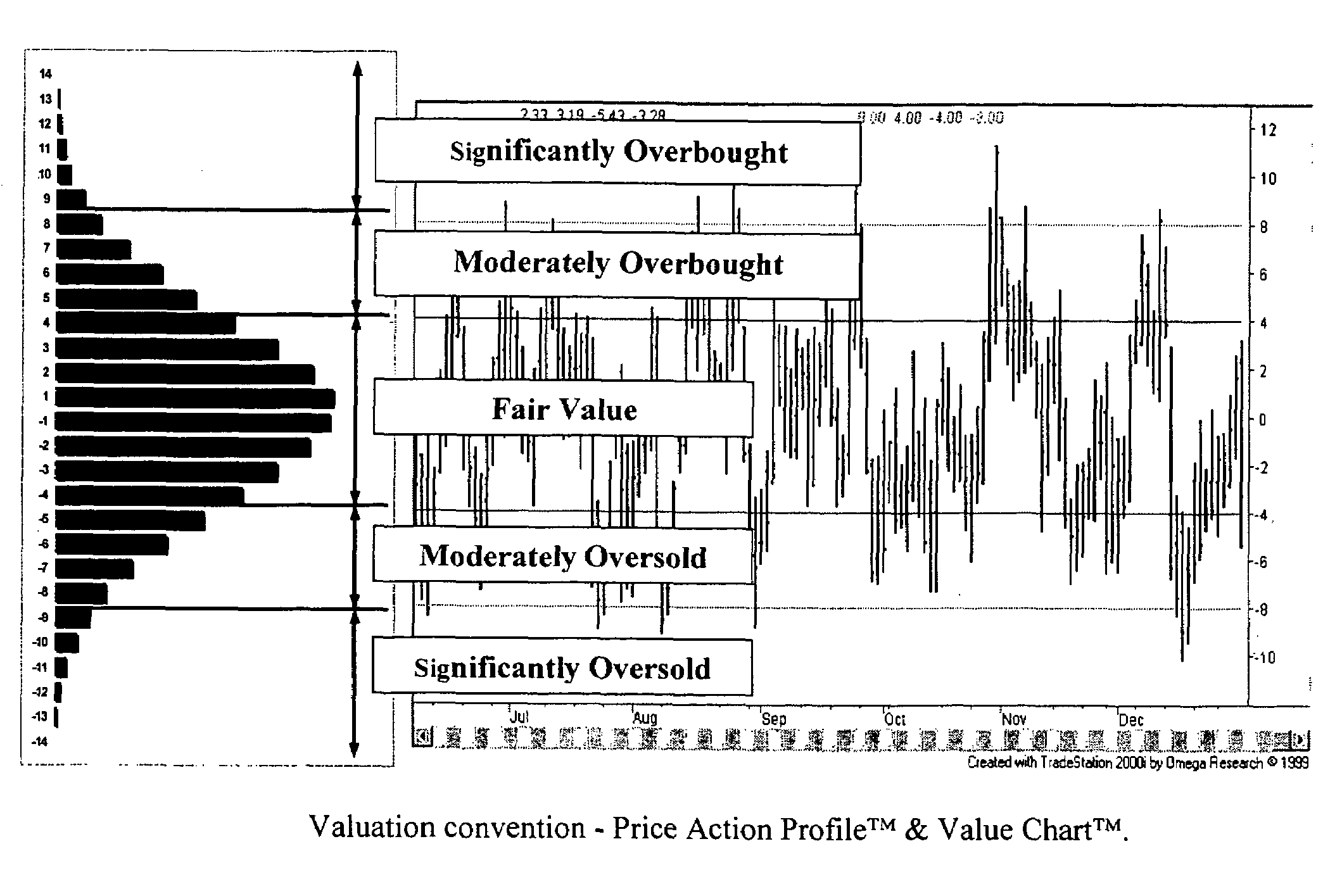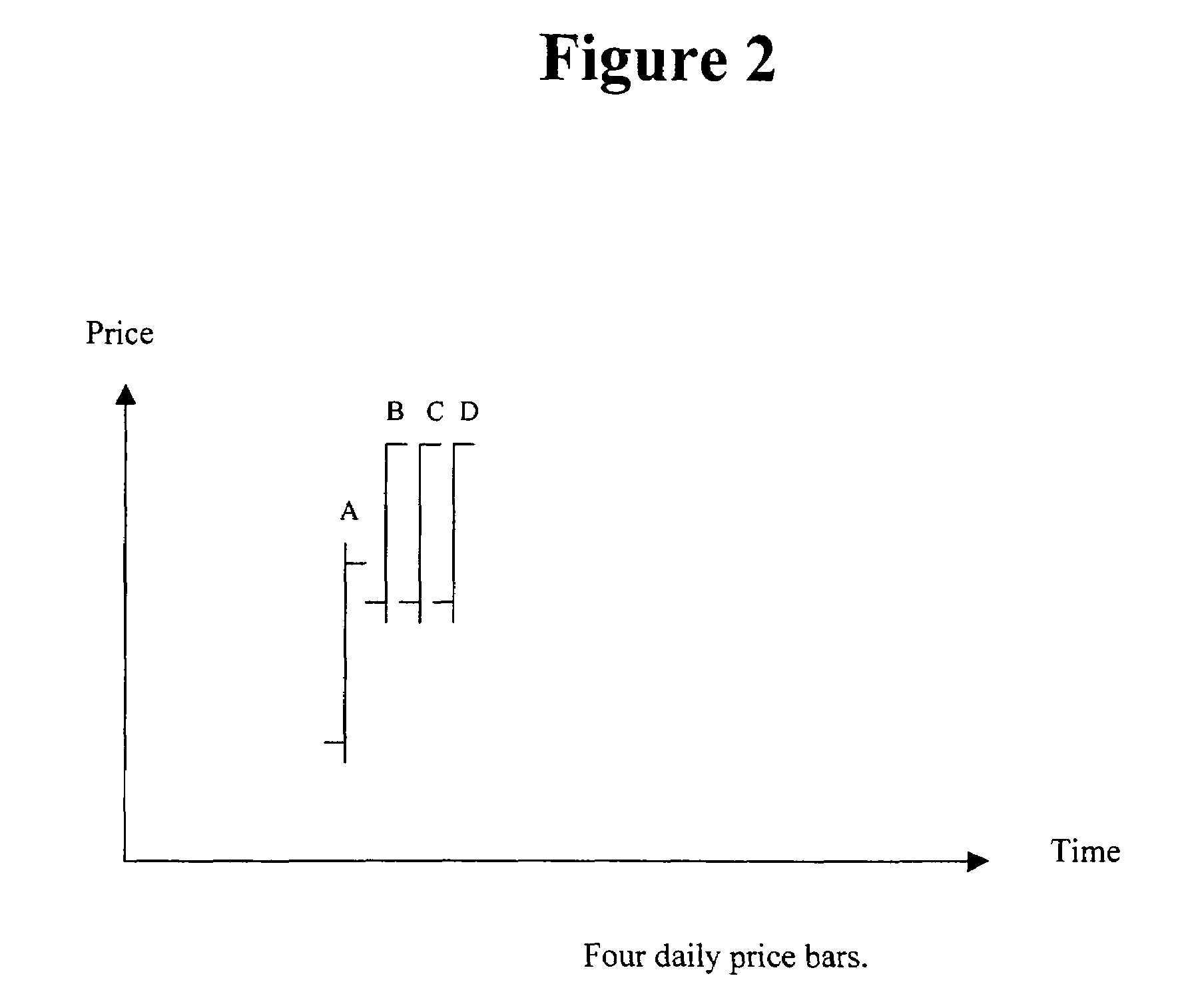Price charting system and technique
a price charting and price technology, applied in the field of financial data processing and analysis, can solve the problems of many market analysis strategies relying too heavily on the opinion of users, too much “gray area”, little long-term usefulness, etc., and achieves the effect of quick analysis of historical characteristics of any market, little effort, and quick determination
- Summary
- Abstract
- Description
- Claims
- Application Information
AI Technical Summary
Benefits of technology
Problems solved by technology
Method used
Image
Examples
Embodiment Construction
Value Charts™
[0067]Although traditional bar charts are useful for referencing the historical and current price activity of a market, we need to have the ability to chart price in a new way so that they can clearly identify relative overbought and oversold price levels. In other words, we need to chart price bars on a relative basis instead of an absolute basis.
[0068]In this type of chart, such a relative basis may be based on a simple 5-day moving average of the median bar chart price (see Formulas for calculating a Relative Chart below) as the reference axis. Therefore, instead of plotting price with respect to zero, the price is plotted (open, high, low, and close) with respect to this simple 5-day median moving average, which we will refer to as the floating axis. Price given in terms of its relation to the floating axis, instead of zero, will be referred to as relative price (see FIG. 3).
Formulas for Calculating a Relative Chart
[0069]Median Price=(High+Low)÷2
[0070]Floating Axis=...
PUM
 Login to View More
Login to View More Abstract
Description
Claims
Application Information
 Login to View More
Login to View More - R&D
- Intellectual Property
- Life Sciences
- Materials
- Tech Scout
- Unparalleled Data Quality
- Higher Quality Content
- 60% Fewer Hallucinations
Browse by: Latest US Patents, China's latest patents, Technical Efficacy Thesaurus, Application Domain, Technology Topic, Popular Technical Reports.
© 2025 PatSnap. All rights reserved.Legal|Privacy policy|Modern Slavery Act Transparency Statement|Sitemap|About US| Contact US: help@patsnap.com



